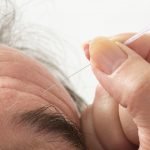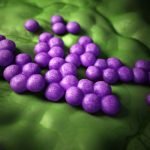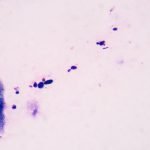Management of BPH and Urinary Tract Symptoms
Benign Prostatic Hyperplasia
John Hahn, DPM, ND
As NDs, we see men in our practices who may be having various stages of symptoms associated with benign prostatic hyperplasia (BPH). This article will present allopathic therapies, along with a new well-designed study on the use of a specific naturopathic and complementary treatment for symptomatic relief in men who have BPH.
Benign prostatic hyperplasia is the most common benign tumor in men.1 Fifty percent of men by age 50 years may have some histologically distinguished BPH, with an increase in symptoms and histopathological changes to among 90% of men by age 90 years.2
Histologically, BPH includes the proliferation of prostatic tissue around the urethra, which restricts urinary flow. Symptoms of the disorder can affect all men seen with BPH. Prostatic tissue overgrowth combined with poor glandular elasticity leads to urethral obstruction. This obstruction may then become severe enough to negatively affect a man’s quality of life owing to increased frequency of BPH-associated urinary symptoms. It has been reported in the literature that 50% of men diagnosed as having histologic changes indicating BPH demonstrate urinary symptoms at age 80 years.3
Nutrition and lifestyle are extremely important in evaluating a man with BPH symptoms. For instance, men who are heavy beer drinkers are exposed to an extract found in hops that has been shown to increase the symptoms of BPH.4
Two years ago, I was invited as an ND to participate in the National Prostate Cancer Awareness clinics that occur once a year throughout the United States. The owner of Thor Enterprises in Clackamas, Oregon, donated several converted recreational vehicles that were equipped to have examination rooms and blood testing facilities for prostate evaluation of men at no charge. These vehicles were staffed by local physicians (an MD, DOs, and myself) who traveled to various parts of Oregon to conduct prostate examinations and perform blood draws for prostate-specific antigen (PSA) levels. I personally examined more than 100 men per day at these events. The other physicians and I were able to detect multiple prostate cancers by digital rectal examinations. We also found many enlarged prostates, as well as abnormal PSA levels in some of the men. Many of these men had never seen a physician for this type of medical evaluation.
I observed from the medical histories that men who are frequent and heavy beer drinkers (on a daily basis) more often than not had BPH on examination, with urinary symptoms. As a result of this experience, I have become more acutely aware of the need for all NDs to consider BPH in their history and physical examination protocols among men who are in their mid to late 40s and older.
Symptomatic BPH generally comprises lower urinary tract symptoms. These symptoms may include problems with stored urine, the ability to void urine, or both.3 Symptoms are progressive with age, and significant prostatic tissue growth results in urethral constriction, which is often measured using the International Prostate Symptom Score (IPSS), a tool developed by the American Urological Association.3 This diagnostic questionnaire is given to the patient for self-assessment. A score of zero indicates no symptoms, and a score of 5 indicates the symptoms are always present. Nocturia is measured as a frequency of 0 to 5 or more episodes per night, for a maximum score of 5. A total score of 0 to 7 points denotes mild symptoms; 8 to 19 points, moderate symptoms; and 20 to 35 points, severe symptoms.5
The symptoms assessed for International Prostate Symptom Score are the following: (1) sensation of not emptying the bladder, (2) frequency of urination, (3) interruption of urine stream, (4) difficulty in postponing urination, (5) weakness of urine stream, (6) need to strain to begin urination, and (7) frequency of urination overnight (nocturia).
Two primary mechanisms can cause bladder stricture. One mechanism is prostatic tissue overgrowth, which in turn results in a narrowing of the urethra lumen.5 Another mechanism is related to smooth muscle tone mediated by α-adrenergic receptors.5 Smooth muscle encapsulates the prostate, urethra, and prostate stroma. Overstimulation of α-adrenergic receptors located within the smooth muscle increases muscle tone, worsening symptoms of obstruction and retention of urine and decreasing the urinary flow rate.5 Commonly used drug classes for BPH (α-adrenergic antagonists and 5-α-reductase inhibitors) attempt to reverse these mechanisms.
Serious medical complications can arise from untreated BPH, such as acute urinary retention, nephropathy, infections, and bladder stones.2 Men with severe BPH symptoms have concerns about sleep deprivation, mobility, leisure activities of daily living, and sexual activities.2
Despite the high prevalence of BPH among our society today, many patients remain untreated. In a 1999 study6 of 1518 men surveyed in the United Kingdom, only 11% of men were aware of treatment options that could abate or manage their lower urinary tract symptoms or self-reported BPH. Naturopathic physicians perform a vital role in educating patients about BPH, and promotion of appropriate disease management therapies is essential.
Allopathic Medications
There are 2 categories of allopathic medications that are approved by the Food and Drug Administration to treat BPH. These are α-adrenergic antagonists and 5-α-reductase inhibitors.
The main differences among various α-adrenergic antagonists are their adverse effect profiles. The second-generation α-adrenergic antagonists likely have hypotensive and other syncopal events associated with their use, as well as abnormal ejaculation. Another rare adverse effect is intraoperative floppy iris syndrome, which is a complication of cataract surgery.
The 5-α-reductase inhibitors work solely on the 5-α-reductase type 2 enzyme by inhibiting about 70% of the conversion of testosterone to dihydrotestosterone within the body. Clinically important adverse effects associated with this class of drugs are impaired libido, decreased semen quantity during ejaculation, and impotence.5
Naturopathic and Complementary Medicines
Naturopathic and complementary medicines for the treatment of BPH are not recommended by the American Urological Association. This determination was made because of the unavailability of clinical research demonstrating clear benefits with their use, as well as the lack of standardization of available products.3
The best-studied naturopathic and complementary therapy for the treatment of BPH is saw palmetto, which has been described in some profiles as “likely safe” and “possibly effective” in treating lower urinary tract symptoms associated with BPH.7,8 In clinical investigations, saw palmetto has demonstrated mild improvements in lower urinary tract symptoms and urinary flow measurements among patients with BPH; however, other authors question any symptomatic relief associated with long-term use.5,7,8 Saw palmetto was well tolerated, with minimal adverse effects reported; however, concern exists about increased risk of bleeding associated with its use, so caution should be exercised when combining it with other medications that may prolong bleeding time.7 Safety has been established for the use of saw palmetto for up to 1 year.8
New Study of Naturopathic and Complementary Treatment of BPH
A well-designed study9,10 used a specific combination of saw palmetto. The Prostataplex (Long Life Maxx, Inc) formula contains the following ingredients: vitamin E (70 IU), vitamin B6 (10 mg), zinc arginate (5 mg), selenium methionine (35 µg), copper gluconate (0.5 mg), and a proprietary combination of pumpkin seed containing 50% fatty acids, nettles containing 0.8% sterols, saw palmetto containing 45% fatty acids, lycopene 5%, and Pygeum africanum bark containing 2.5% sterols, totaling 460 mg. Also included is an amino acid complex containing l-alanine and l-glutamic acid, totaling 150 mg.
Eighty patients completed the study, including 39 patients receiving Prostataplex and 41 control subjects receiving placebo. The 2 groups were similar in age, duration of disease, PSA level, and IPSS, as well as other baseline characteristics of urinary flow rate, residual volume, quality of life, and digital rectal examination findings. The 2 groups were also similar at baseline in their use of alcohol, the frequency of nocturia, and a notation of BHP in their medical history.
The study was performed in a double-blind fashion. Each intervention patient took Prostataplex (1 capsule 3 times daily) for 90 days. The mean age of the patients in the study was 63 years. The mean duration of disease was 5.9 months. No patients had been involved in other clinical trials, and none were interested at the time of the study in undergoing surgical treatment for their BPH. There were no reported adverse reactions to the nutraceutical combination in the treatment group.
After 3 months of treatment, the patients given Prostataplex showed significantly increased maximum urinary flow rate and improved IPSS and quality-of-life. These patients also showed improvement on radiographs and marginal improvement in nocturia relative to the control group.
One variable measured over the 3-month study was the sensation of incomplete emptying of the bladder. Among the treatment group, there was a 79.5% change in sensation at the end of the first month, with 7.7% indicating no change by the end of the third month.
Maximum urinary flow rates were 18.03 mL/s in the treatment group and 12.79 mL/s in the control group. Voided urine volumes were 215.29 mL in the treatment group vs 205.00 mL in the control group. The IPSS means were 9.82 in the treatment group vs 14.95 in the control group.
At the end of the study, significant improvements were observed among the treatment group in maximum urinary flow rate, IPSS, and quality of life. Although no changes in digital rectal examination findings were observed in the treatment group, the control group demonstrated increased abnormalities, such as nodules and further prostate enlargement, suggesting progression of BPH.
Significant improvements in BPH symptoms were seen in the treatment group at 2 months after treatment and at more than 3 months after treatment. The symptom most significantly improved was resolution of the sensation of cloudy thinking after urination.
In summary, patients receiving Prostataplex vs placebo for 3 months showed significant improvement in maximum urinary flow rate, IPSS, nocturia, and quality of life, but there was no significant change in prostate size. In this well-designed study, a nutraceutical combination offering synergistic action of amino acids, antioxidant vitamins, and botanical extracts reduced symptoms associated with BPH, without the adverse effects of allopathic medications.
CALL TO ACTION
I would like to urge my naturopathic colleagues to take an active role in the clinical diagnosis and treatment of this prevalent condition among men in the United States. I know from my personal experience working with the National Prostate Cancer Awareness group that men are extremely grateful to be able to return to a more normal night’s sleep and to obtain a better quality of life with proper diagnosis and treatment of BPH.
 John Hahn, DPM, ND holds a doctor of podiatric medicine degree. He also received an ND degree from the National College of Naturopathic Medicine in Portland, Oregon. He is certified in foot surgery by the American Board of Podiatric Surgery. Dr Hahn has several published scientific articles and was a contributor to the textbook A Compendium of Podiatric Biomechanics. He has taught as an adjunct instructor at Pioneer Pacific College and Clackamas Community College in Oregon. Dr Hahn was an adjunct professor in the Department of Integrative Medicine at the New York College of Podiatric Medicine, New York City. He is a professional consultant for Heel Inc and is a member of the medical advisory board for GVI. He has delivered lectures to various professional groups for these organizations. Dr Hahn works part-time at the Gresham Cosmetic Laser Center in Troutdale, Oregon, and at Forever Young Medical Spa in Hillsboro, Oregon.
John Hahn, DPM, ND holds a doctor of podiatric medicine degree. He also received an ND degree from the National College of Naturopathic Medicine in Portland, Oregon. He is certified in foot surgery by the American Board of Podiatric Surgery. Dr Hahn has several published scientific articles and was a contributor to the textbook A Compendium of Podiatric Biomechanics. He has taught as an adjunct instructor at Pioneer Pacific College and Clackamas Community College in Oregon. Dr Hahn was an adjunct professor in the Department of Integrative Medicine at the New York College of Podiatric Medicine, New York City. He is a professional consultant for Heel Inc and is a member of the medical advisory board for GVI. He has delivered lectures to various professional groups for these organizations. Dr Hahn works part-time at the Gresham Cosmetic Laser Center in Troutdale, Oregon, and at Forever Young Medical Spa in Hillsboro, Oregon.
References
1. Scher HI. Benign and malignant diseases of the prostate. In: Fauci AS, Braunwald E, Kasper DL, et al, eds. Harrison’s Principles of Internal Medicine. 17th ed. New York, NY: McGraw-Hill; 2008. Chapter 91.
2. McVary KT. BPH: epidemiology and comorbidities. Am J Manag Care. 2006;12(5)(suppl):S122-S128.
3. American Urological Association. Chapter 1: AUA guideline on the management of benign prostatic hyperplasia: diagnosis and treatment recommendations. 2003. http://www.auanet.org/content/guidelines-and-quality-care/clinical-guidelines/main-reports/bph-management/chapt_1_appendix.pdf. Accessed September 17, 2011.
4. Chyou PH, Nomura AM, Stemmermann GN, Hankin JH. A prospective study of alcohol, diet, and other lifestyle factors in relation to obstructive uropathy. Prostate. 1993;22(3):253-264.
5. Burnett AL, Wein AJ. Benign prostatic hyperplasia in primary care: what you need to know. J Urol. 2006;175(3, pt 2):S19-S24.
6. Trueman P, Hood SC, Nyayc US, Mrazek MF. Prevalence of lower urinary tract symptoms and self-reported diagnosed ‘benign prostatic hyperplasia,’ and their effect on quality of life in the community-based survey of men in the UK. BJU Int. 1999;83(4):410-415.
7. Natural Medicines Comprehensive Database. http://naturaldatabase.therapeuticresearch.com/home.aspx?cs=&s=ND&AspxAutoDetectCookieSupport=1. Accessed September 17, 2011.
8. Berardi RR, Ferreri SP, Hume AL, et al. Handbook of Nonprescription Drugs: An Interactive Approach to Self-Care. 18th ed. Washington, DC: American Pharmacists Association; 2009.
9. Shi R, Xie Q, Gang X, et al. Effect of saw palmetto soft gel capsule on lower urinary tract symptoms associated with benign prostatic hyperplasia: a randomized trial in Shanghai, China. J Urol. 2008;179(2):610-615.
10. Ozdemir AT, Serefoglu EC, Balbay MD. Re: effect of saw palmetto soft gel capsule on lower urinary tract symptoms associated with benign prostatic hyperplasia: a randomized trial in Shanghai, China [comment on J Urol. 2008;179(2):610-615]. J Urol. 2008;180(3):1188.










